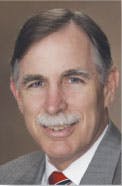By reaching its 40th anniversary, Medical
Laboratory Observer (MLO) has demonstrated both usefulness
and relevance to laboratory medical professionals. That accomplishment
deserves recognition and applause. The decade of the 1960s laid a
foundation for unprecedented progress in medicine. In 1967, South
African heart surgeon Dr. Christian Barnard performed the first heart
transplant in Capetown, South Africa. That same year, Argentine surgeon
Dr. Rene Favaloro, working in at the U.S. Cleveland Clinic, performed
the first coronary bypass operation using the patient's native saphenous
vein as an autograft. What made this operation notable? It was not done
in response to the patient's deteriorating condition. Today, these types
of surgeries are relatively safe and widely performed.
When MLO launched in 1969, remember what did
not exist? Fax machines, cell phones, personal computers, and overnight
delivery companies. What made music portable were four- and eight-track
cassettes. Society and business moved at a much slower pace. People woke
up to morning newspapers or came home to the evening edition delivered
by the newsboy on his bicycle. For those with extra-good memories, in
1969, a Big Mac with medium drink and fries cost 88c!
My point in offering these insights about life in the
1960s is that we seldom think about the valuable resources that we have
used over the past four decades to keep us up to date with new
developments and innovations in laboratory medicine. Innovative
technologies and changing standards of care have greatly transformed
laboratory medicine from the way it was practiced during the 1960s. To
illustrate this point, how many of you remember walking into a
laboratory for the first time in 1969? I will bet that one magazine you
saw on people's desks or in the break room of your lab was Medical
Laboratory Observer. If this is true, then MLO likely has
been your friend and guide since the earliest days of your career.
Another element in MLO's durability is its
recognition of the important role that MTs, CLSs, MLTs, and all other
laboratory professionals play in sustaining the high quality of lab
services delivered daily in the United States. Regularly, MLO
turns the spotlight on laboratory professionals who make a difference
through leadership in their labs or by donating time and service to
laboratories in less-developed countries around the globe.
As it celebrates its 40th year, MLO suggested
that this epistle provide its readers with an informed peek into the
future. Making predictions is perilous, particularly given the speed
with which healthcare is changing. Yet, several transformative forces
are easily seen today. Advances in genetic medicine are reshaping the
practice of laboratory science. For example, much of infectious-disease
testing is now possible to perform using a rapid molecular assay.
Molecular technologies are now being applied to cancer testing; this
field of lab medicine will probably see accelerated changes in the next
36 to 48 months.
The concept of “personalized healthcare” also
promises to be a positive force for change. At its core, personalized
medicine will use genetic and molecular analysis to identify the unique
characteristics of a patient, then guide physicians on how to customize
therapy that best meets that patient's needs. With personalized
medicine, the role of laboratory testing in making diagnoses and
deciding on therapies will increase. Companion diagnostics will play an
essential role in the development of personalized-medicine services.
Together, personalized medicine and companion diagnostics are expected
to make the clinical laboratory a closer partner in the patient-care
continuum.
Do not overlook the growth of point-of-care testing,
which includes patient self-testing and home testing. In vitro
diagnostics (IVD) manufacturers are continually bringing to market
ever-smaller devices capable of acceptable sensitivity and specificity.
These devices make it possible to perform lab tests closer to the
patient — thus producing faster results and allowing for immediate
intervention by the caregiver.
Finally, because the end product of every lab is
information, labs will use the potential of new technologies that add
capability to computers, software, the Internet, cell phones, and
wireless services. Further innovations in these informatics services
will make it possible for physicians and patients to interact with
laboratory scientists with no more effort than a mouse click or a
cell-phone call.
Taken collectively, these predictions demonstrate how
the lab's future years will be as interesting and enriching for
laboratory medicine professionals as in the past four decades. It also
demonstrates why laboratory scientists will continue to rely on
Medical Laboratory Observer and similar valuable sources to keep
them informed about the profession's most important developments.
—Robert Michel, Editor-in-chief, The Dark Report


